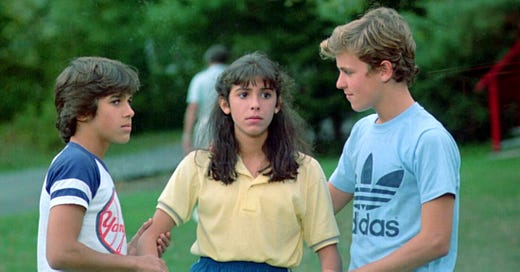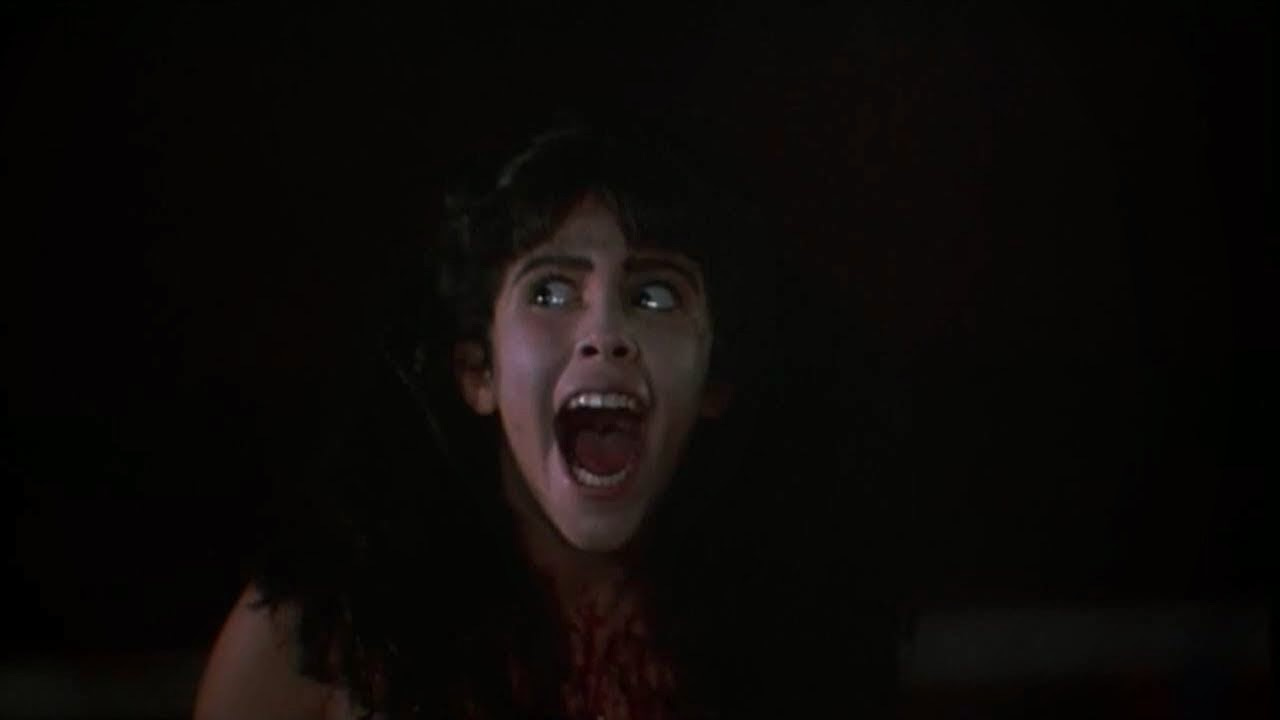Sleepaway Camp (1983)
3/10
To explain how I ended up watching Sleepaway Camp on Halloween night, I need to backtrack a bit. Similar to watching Yuletide-themed films on Christmas Eve, I have a tradition of watching a horror movie on Halloween. In both cases, there are certain classics you can return to over and over again, but often I gamble on a movie I haven’t seen before. More often than not, gamblers lose.
My original plan was to watch Halloween II, the 1981 version—I’d heard it was the best of the Halloween sequels, which generally suck. When I sat down to watch it on Prime, I found that despite using graphics from the 1981 film, the movie they had was actually Rob Zombie’s Halloween II, which I had already seen theatrically in 2009. As a plan B, I decided to watch Halloween: The Curse of Michael Myers, widely viewed as the worst of the series. But the only version available on Crave was in French, despite the fact that I remember watching the first 15 minutes or so last week in English.
Hence I turned to plan C: Sleepaway Camp, which first came on my radar earlier in October when the Nostalgia Critic reviewed it. Further gaining my attention, Wikipedia claims that its twist ending “is considered one of the most shocking in the horror genre and in film history at large.” All that made it seem worth a watch. After all, standards are pretty low when it comes to slasher movies, which rely on a standard formula. Sleepaway Camp also had the distinction of being hailed as a cult classic. Surely this film was a safe bet.
Consider me disappointed. Sleepaway Camp, written and directed by Robert Hiltzik, is by and large a bore. Its must-vaunted twist ending feels like a non sequitur where the shock factor relies on the audience’s presumed homophobia and transphobia.
Every slasher movie portrays its killer with a certain motivation, as described by film scholar John Kenneth Muir:
Although a brutal murderer, the seemingly unstoppable killer in the slasher film is also a person who has been wronged or suffered some terrible transgression. This formative act, like witnessing the murder of a parent, is the very thing that flips “on” the switch of insanity and turns a normal person into an unstoppable, murderous avenger.
What is the motivation for the killer in Sleepaway Camp? There’s no way to discuss this without going into spoilers, so here’s your friendly warning. Read no further if you don’t want to know the killer’s identity.
Spoilers ahead.
The opening scene in slasher movies generally provides us with the motivation that will drive the killer. Sleepaway Camp starts with the death of John Baker, a father out on a boating trip with his young children Angela and Peter—plus another man, Lenny, whom we eventually learn is John’s boyfriend. Two teens driving a motorboat accidentally kill John and one of his children.
Eight years later, the surviving child, Angela, is traumatized and living with her eccentric aunt Martha Thomas (Desiree Gould) and cousin Ricky Thomas (Jonathan Tiersten). Angela and Ricky head to Camp Arawak, where the initially mute Angela encounters an array of mean girls—notably Judy (Karen Fields) and Meg (Katherine Kamhi), bullies, and head cook Artie (Owen Hughes), who tries to molest her. She develops a relationship with fellow camper Paul (Christopher Collet), which is marred by his overly aggressive advances and Judy seducing Paul. All those who have wronged Angela end up dead. Gee, I wonder who the killer could be?
The big twist at the end occurs when counselors find Angela has beheaded Paul and discover that “Angela” is actually Peter, her brother who was thought to be dead. The real Angela died in the boating accident with father John. Aunt Martha, who already had a son, decided to raise young Peter as the daughter she had always wanted. In one scene, Paul kisses Angela, which causes her to flash back to when she and her brother saw their father in bed with another man.
What does all this amount to? Ultimately this is just another slasher movie about a person wronged by others who responds with mass murder. The twist reveal about Angela only reinforces how little sense the rest of the story makes. Her father’s death only matters insofar as it leads to the death of her brother and Aunt Martha deciding to raise her as a daughter. Otherwise, Angela’s only reason for killing is that other kids bully her—which to be fair is an acceptable motive for a horror villain, but somewhat underwhelming when compared to other slasher movies.
A bigger problem with Sleepaway Camp is that most of the movie is dull. Long periods pass between kills, and when they do occur they’re relatively subdued and not that graphic. One kill involving a beehive in a bathroom is somewhat clever, but the result seem over the top. Meanwhile, our lead characters aren’t very interesting, despite the trauma Angela has experienced. Many supporting characters come across as mere stereotypes, like Judy, who is a one-dimensional mean girl.
Sleepaway Camp is pretty underwhelming, but seeing repeated slasher movies from this era is a good way to quell any lingering 1980s nostalgia one might have. Kids at Camp Arawak are bullied in plain sight and adults do nothing. Camp staff like Artie openly lust after teenage girls, and owner Mel Costic (Mike Kellin), a man in his 60s, sets up a date with Meg; why she accepts is beyond me. Homophobia is blatant and pervasive, even as men wear ridiculously short shorts and crop tops. It’s an era I think I’ve had enough of for a while.






